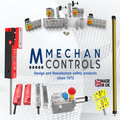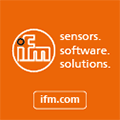
Posted to News on 5th Jul 2012, 11:45
Accessible and affordable design software for machine builders
Colin Watson of Symetri explains that new design software developments and cloud technology are not just for high-end customers but also offer advantages for machine builders.

It is easy to presume that the UK's machine builders and equipment providers have had it tougher than most during the past few years. With manufacturers postponing all but essential capital investment, factory output falling and the Euro crisis still looming large, the signs are not brilliant - on paper, at least.
However, many machine builders have found their niche or specialist market. Their customers are under pressure to keep refreshing their product lines and get new ideas to market faster. So, while they may not be in a position to invest in a new production line or fit out a new factory, they are looking for refinements to existing machines, retrofits and new components. This creates a challenge for machine designers who have to respond quickly to their customers' changing needs. Within this context, what is new on the technology front that can help them develop better equipment - and do so faster?
Improved workflow
Anything that automates routine processes can accelerate workflow. As a result, some teams are considering rules-based systems to minimise design-to-production timescales. Symetri recently worked with Halifax Fan, a manufacturer of industrial centrifugal fans, on such a project.
The team was taking up to 12 hours to process a design and issue it to the shop floor. The overheads were adding up fast. iLogic is now an integral part of Autodesk Inventor but, at the time, Operation Director, Ian Crum and his team had to tailor it with the help of Symetri. He says: "They helped us to understand how to link it into Inventor and to write the logic behind it." The system takes information directly from a quotation and feeds it into iLogic. Rather than taking hours, within minutes it has produced all that is needed for customer approval and then for production.
Of course, engineering to order is only suitable for a certain type of product. But there has also been a string of further software developments that are helping to improve productivity and the quality of work. Many manufacturers are now recognising that gains can be made when 3D design software is integrated with visualisation, simulation and review tools for fast, in-process evaluation and optimisation of designs. Software vendors such as Autodesk have responded by putting together product suites that offer designers a broader tool set at an affordable price.
Product review
Another Symetri customer, Filter Designs, which specialises in complex filters for large industrial plants, is finding the product review tool Navisworks particularly useful. Navisworks is now included in Autodesk's Produce Design Suite and Autodesk Factory Design Suite to enable machine and equipment builders see how their designs will fit on the factory floor or elsewhere.
Filter Designs engineer, David Hodgett says: "Navisworks aggregates models from any platform into one single digital prototype to identify design clashes. Some of our models and drawings come from architectural or building design software. It is important for us to be able to view our designs in situ and Navisworks enables us to integrate the building models with the engineering designs."
Affordable simulation
Autodesk is also eliminating the need for high-end computer hardware to carry out intensive visualisation and simulation tasks by offering the option of using these products in the cloud on a 'pay as you go' basis. This means many more design engineers will be able to carry out simulation tasks on their own designs rather than outsourcing the process or leaving it to experts. When the tools are integrated with engineering design software, simulation is no longer an add on to check a final design will work; rather it can also be used to test multiple design iterations and help influence final design decisions.
In fact, cloud technology opens up a host of possibilities, enabling alternative versions of applications such as product lifecycle management (PLM). Until now, PLM usually involved expensive IT consultants and drawn-out implementation timescales. New-generation PLM in the cloud can be 'turned on' almost instantly, is easy to use, can be accessed for anywhere and can be bought as a service rather than needing huge capital investment.
None of these developments involve new untested technologies. Instead, they capture the important and valuable essence of existing applications and make this available in a more user-friendly and affordable form to a far wider market.
No technology can transform the economy. But, on a more positive note, there are exciting new developments that can help businesses make more of the opportunities they do have.
For further information about engineering design services, visit the Symetri website.
Want the latest machine building news straight to your inbox? Become a MachineBuilding member for free today >>














